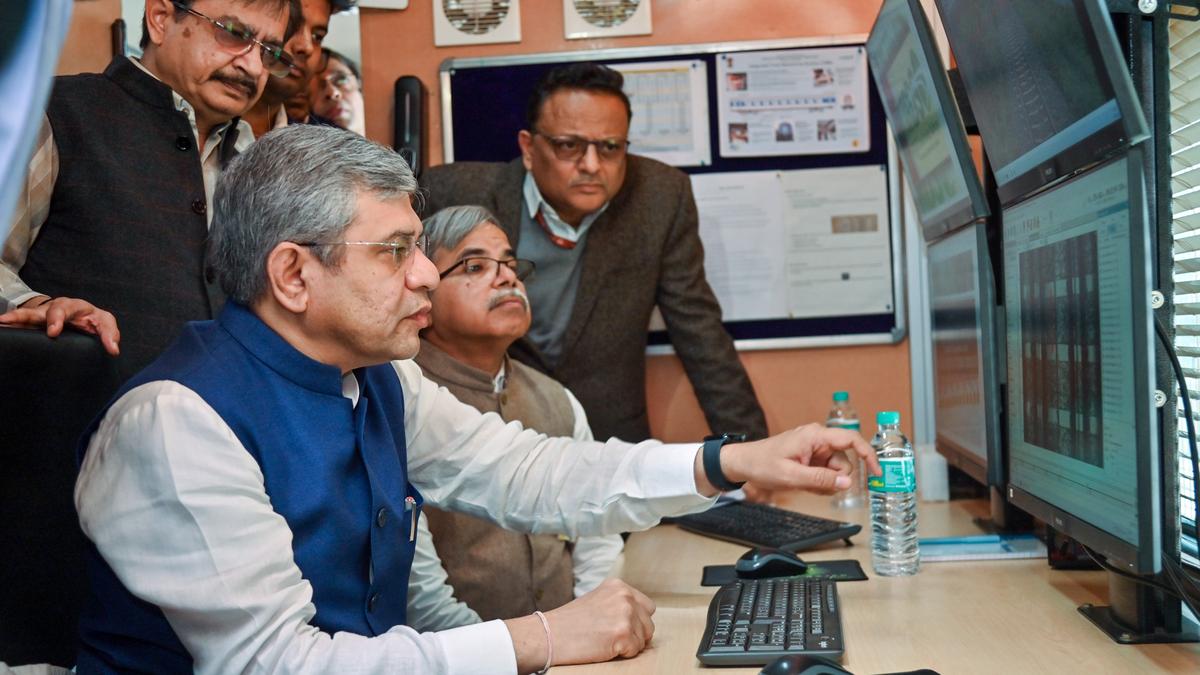
Tech systems for inspecting tracks to improve inspection frequency in Railways, says Vaishnaw
The Hindu
Union Minister for Railways announces increased rail track health monitoring frequency using RCRIVs and ITMS for enhanced safety.
The current practice of reviewing rail track health every four months, will be reduced to once every two months with the implementation of Road Cum Rail Inspection Vehicles (RCRIVs) and Integrated Track Monitoring Systems (ITMS), Union Minister for Railways Ashwini Vaishnaw said in New Delhi on Thursday (December 5, 2024).
Mr. Vaishnaw was inspecting RCRIV and ITMS systems at New Delhi railway station.
RCRIV is a versatile machine designed to inspect railway tracks with precision and efficiency, and can be operated seamlessly on both road and rail. Based on the Tata Yodha pick-up truck, it features advanced cameras and sturdy wheels, enabling continuous recording of track conditions for up to 15 days, ensuring enhanced safety and reliability, Mr. Vaishnaw informed.
ITMS technology, on the other hand, is installed on track recording cars and uses advanced technology to monitor and measure track parameters at speeds ranging from 20 to 200 kmph. It features contactless monitoring with laser sensors and high-speed cameras for precise data collection, along with real-time alerts through SMS and email for immediate attention to critical areas.
He stated that rail track recorder vehicles will be deployed in every zone. He also emphasised the role of technology for maintaining the health of railway tracks, easing trackmen’s workload and ensuring better operational outcomes.
Mr. Vaishnaw highlighted the operational importance of ITMS, noting that by providing real-time alerts to trackmen via SMS and email, it enables quick responses to areas requiring urgent attention. This approach significantly improves track safety while making the work of trackmen more efficient and manageable.
He also emphasised the importance of a cyclical approach to track maintenance — measuring tracks, performing maintenance, and re-measuring — on a more frequent basis, ideally every two months. This cycle will be pivotal in significantly enhancing track safety and ensuring the long-term health of railway infrastructure.













